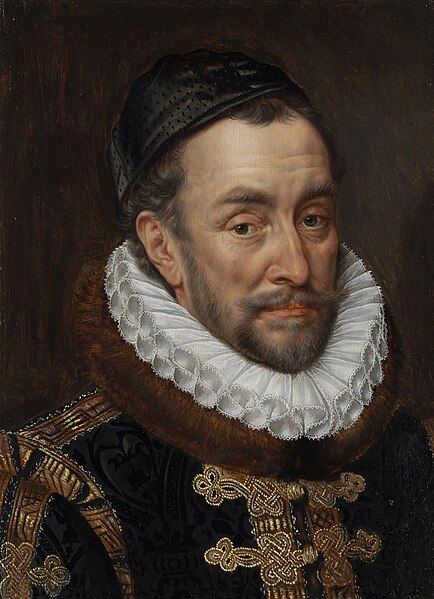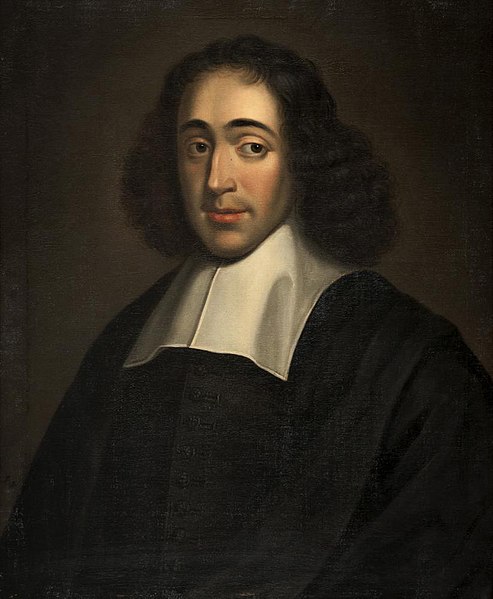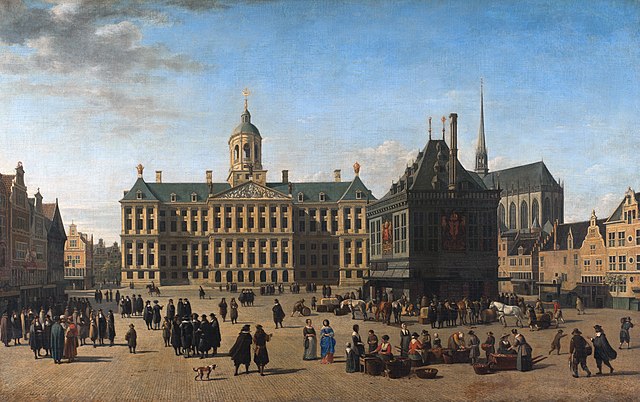Orangism (Dutch Republic)
In the history of the Dutch Republic, Orangism or prinsgezindheid was a political force opposing the Staatsgezinde (pro-Republic) party. Orangists supported the Princes of Orange as Stadtholders and military commanders of the Republic, as a check on the power of the regenten. The Orangist party drew its adherents largely from traditionalists – mostly farmers, soldiers, noblemen and orthodox Protestant preachers, though its support fluctuated heavily over the course of the Republic's history and there were never clear-cut socioeconomic divisions.
Cornelis Tromp by Abraham Evertsz. van Westerveld (ca. 1666). Tromp is pictured in Roman costume. His orangist sympathies are reflected by the color of his mantle.
The United Provinces of the Netherlands, officially the Republic of the Seven United Netherlands, and commonly referred to in historiography as the Dutch Republic, was a confederation that existed from 1579 until the Batavian Revolution in 1795. It was a predecessor state of the present-day Netherlands, and the first independent Dutch state. The republic was established after seven Dutch provinces in the Spanish Netherlands revolted against Spanish rule, forming a mutual alliance against Spain in 1579 and declaring their independence in 1581. It comprised Groningen, Frisia, Overijssel, Guelders, Utrecht, Holland, and Zeeland.
William of Orange, by Adriaen Thomasz Key.
Anonymous portrait of the Dutch philosopher Baruch Spinoza. He was of Portuguese-Jewish origin.
The Amsterdam Stock Exchange, by Job Adriaenszoon Berckheyde
Dam Square in the late 17th century: painting by Gerrit Adriaenszoon Berckheyde





